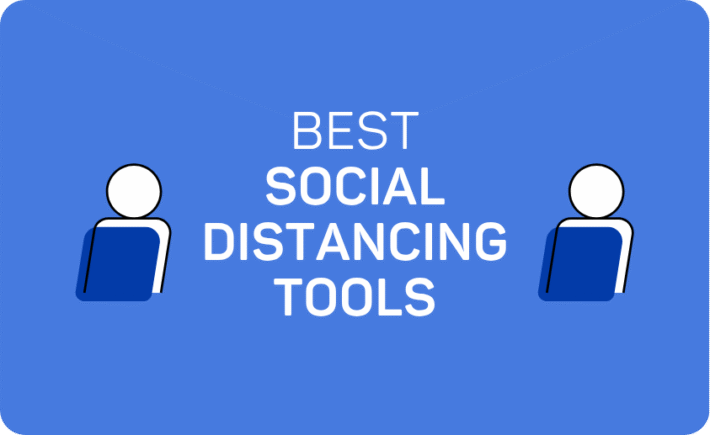35 Proven Tips for Effective Queuing

Effective Queuing is essential for maintaining smooth operations and ensuring customer satisfaction. Whether you run a hospital, retail store, service center or any other business that involves a queue, these 35 proven tips will help you create an optimal queuing experience and manage customer flow effectively.
What Do We Mean By Effective Queuing?
Effective queuing helps businesses improve customer experience, reduce wait times, and operate efficiently. Poorly managed queues can lead to frustration, lost customers, and negative reviews. Implementing a well-thought-out queuing strategy is key to success.
Effective queuing systems are the backbone of customer satisfaction and business efficiency.
1. Use a Queue Management System
Invest in a queue management system to streamline queue processes, reduce waiting times, and improve customer communication. Systems can include digital ticketing, mobile queue updates, and real-time notifications.
2. Offer Remote Queuing Options
Allow customers to join the queue from their smartphones through a queue management system. This reduces physical congestion and lets customers wait wherever they are comfortable.
3. Automate Queues with Self-Service Kiosks
Install self-service kiosks to manage simple tasks such as ticket issuance or customer check-ins. This reduces the workload on staff and speeds up the queuing process.
4. Implement Real-Time Queue Updates
Provide real-time updates on customer wait times. Keeping customers informed reduces frustration and enhances the perception of service efficiency.
5. Use Digital Signage for Queue Information
Display queue updates on screens so customers are always aware of their position. This increases transparency and helps with effective queuing.
Leveraging Technology in Queue Management Systems
6. Enable Mobile Notifications
Notify customers via SMS or app updates when their turn is near. This allows them to manage their time better while still staying informed about their position in the queue.
7. Incorporate AI-Based Queue Predictions
Use predictive analytics to estimate queue times based on customer flow data. This feature in queue management systems can help optimize staffing and resource allocation.
8. Implement Virtual Waiting Rooms
A virtual waiting room allows customers to monitor their queue status remotely. This feature can drastically reduce in-store waiting times.
9. Use Smart Queue Algorithms
Smart algorithms can prioritize customers based on various factors such as booking type, urgency, or customer loyalty, ensuring effective queuing that aligns with business goals.
10. Offer Queue Jumping for Premium Customers
Allow priority customers or those paying for premium services to jump the queue. This incentivizes higher spending and improves customer satisfaction for high-value clients.
Optimizing Physical Queue Design
11. Organize Physical Queues with Clear Signage
Use clear and visible signage to guide customers. This avoids confusion and helps manage the flow of people, making for effective queuing.
12. Use Single-Line Queuing for Multiple Service Points
Single-line queues are more efficient because they serve customers in the order they arrive. This method prevents bottlenecks and ensures fairness.
13. Design Queues to Minimize Cross-Traffic
Prevent congestion by designing your queue system to minimize cross-traffic. This can be achieved by using barriers, stanchions, or floor markings.
14. Provide Comfortable Waiting Areas
A comfortable waiting area with seating, air conditioning, and entertainment options can improve the customer experience and make long waits more bearable.
15. Implement Flow-Control Barriers
Barriers, such as retractable belt stanchions, guide customers through the queue, reducing chaos and enhancing effective queuing.
Managing Customer Expectations in Queues
16. Communicate Estimated Wait Times
Transparency is key to effective queuing. Clearly display estimated wait times so customers know what to expect, reducing frustration and improving satisfaction.
17. Set Up a Queue for Quick Services
If you offer services that take different amounts of time, create a separate queue for quick services. This allows customers with simple needs to be served faster.
18. Use Visual Cues to Manage Waiting Anxiety
Visual elements like calming colors, digital displays, and even art can reduce the anxiety associated with long waits, creating a more pleasant environment.
19. Introduce Entertainment Options
Offer light entertainment, such as videos, magazines, or even interactive displays. This helps customers pass the time more comfortably while waiting.
20. Implement Customer Feedback Surveys
Once customers are served, ask for immediate feedback on their queue experience. This helps identify pain points and areas for improvement.
Employee Empowerment for Efficient Queue Management
21. Train Employees on Queue Management
Your staff should be trained to handle effective queuing efficiently. This includes managing crowds, answering customer queries, and dealing with complex situations.
22. Assign Employees as Queue Ambassadors
Designate staff members to greet customers and direct them to the right service points. Queue ambassadors can answer questions and help manage waiting expectations.
23. Use Staff to Triage Customers
In busy environments, staff can triage customers based on their needs and guide them to the appropriate queue or service point, speeding up the process.
24. Empower Employees with Queue Data
Give your employees access to real-time data from your queue management system so they can make informed decisions about prioritizing customers and reallocating resources.
25. Encourage Employee Cross-Training
Cross-train employees to handle different service points or customer issues. This flexibility helps reduce bottlenecks and ensures smoother queue management during peak times.
Advanced Tips for Effective Queuing
26. Use Predictive Analytics for Better Staffing
Leverage queue data to predict peak times and ensure adequate staffing. This prevents long queues during busy periods and improves efficiency.
27. Offer Appointment-Based Services
Allow customers to pre-book appointments or services. This reduces the number of walk-ins and makes queue management more predictable.
28. Create Separate Queues for Walk-ins and Appointments
If you offer both walk-in and appointment-based services, ensure that each has a dedicated queue to prevent confusion and ensure fair treatment.
29. Implement Loyalty Programs to Reward Patience
Offer rewards or discounts to loyal customers who frequently use your services. This can turn a long wait into a positive experience and build brand loyalty.
30. Use Queue Data to Improve Customer Flow
Collect and analyze queue data to find patterns and identify opportunities to optimize your queuing process. This helps improve customer flow and reduces wait times.
31. Offer Clear Queue Instructions
Ensure that customers know how to join the queue, what to expect during the wait, and how they will be served. Clear instructions prevent confusion and improve customer satisfaction.
32. Use Buffer Zones in Waiting Areas
Incorporate buffer zones where customers can relax before joining the final queue. These spaces reduce crowding at the main queue and help maintain order.
33. Create VIP Queues for Special Customers
Establish a separate queue for VIP customers or those paying for premium services. This ensures they are prioritized, enhancing their experience.
34. Use Real-Time Queue Monitoring
Monitor your queues in real-time to spot bottlenecks and make immediate adjustments. This proactive approach ensures efficient queue management.
35. Regularly Review and Update Queue Processes
Queues and customer expectations evolve, so periodically review your queuing processes and make necessary adjustments to ensure you’re offering effective queuing solutions.
Why Choose QueueHub for Your Queue Management System?
By following these 35 tips for effective queuing, you can greatly improve customer satisfaction and streamline your operations. Implementing a reliable queue management system like QueueHub will make the process even more efficient.
With features such as;
- Mobile queuing
- Real-time updates
- Data-driven insights
- And more
QueueHub is the perfect solution for businesses seeking to optimize their queuing processes. Try QueueHub today with a free demo!
Schedule a free demo!
Frequently Asked Questions (FAQ)
1. What is a queue management system?
A queue management system is a tool that helps businesses manage customer queues and improve service efficiency by reducing wait times and organizing customer flow.
2. Why is effective queuing important?
Effective queuing is important because it minimizes customer wait times, reduces frustration, and improves the overall experience for both customers and staff.
3. What are the benefits of a queue management system?
A queue management system provides multiple benefits such as reduced perceived wait times, better staff efficiency, customer satisfaction, and access to queue analytics.
4. How can technology improve queue management?
Technology improves queue management by providing real-time updates, offering mobile queuing options, and using predictive analytics to optimize service during peak times.
5. How does QueueHub help with queue management?
QueueHub is a robust queue management system that offers mobile queuing, real-time updates, and data-driven insights, helping businesses manage queues effectively and improve service quality.




